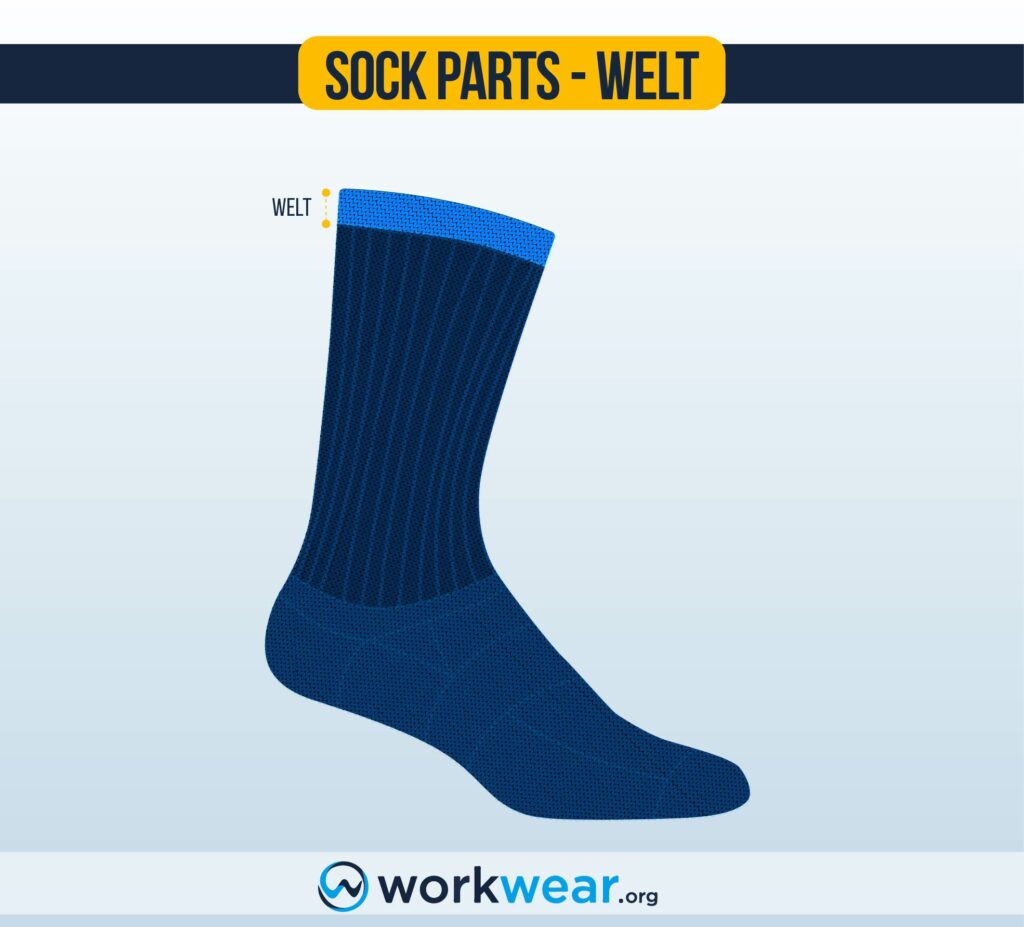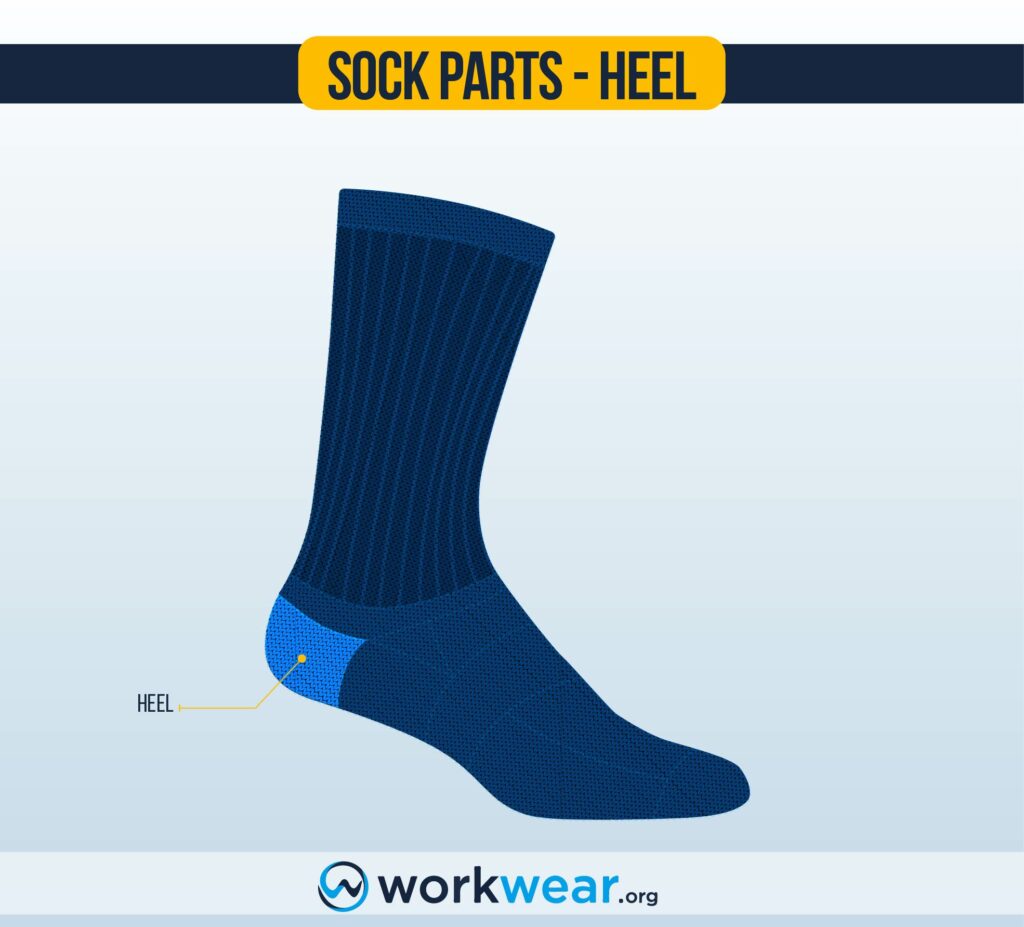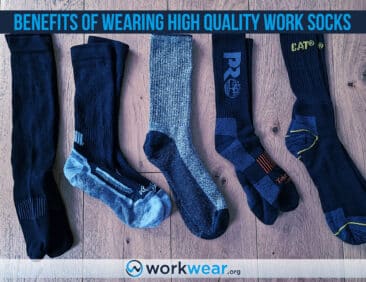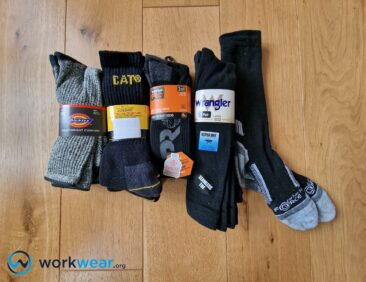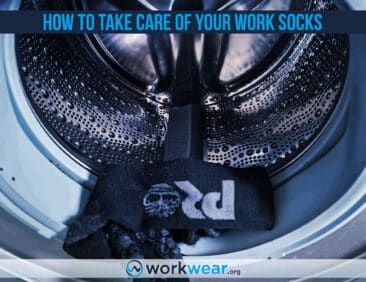Parts of a Work Sock – Terms You Need to Know

Work socks cover the feet to protect them from rubbing against the inner lining of work boots or shoes. Without them, the skin can easily get chafed, especially with long hours of continuous walking and moving around the work area to get the job done. Like any other item, work socks are made up of parts with corresponding roles.
The parts of a work sock are easy to remember because they’re just like the matching foot areas to which the sections relate.
Knowing these parts will give you a better appreciation of how the work socks function and how each segment contributes to the socks’ overall performance.
What are the Parts of a Work Sock?
Cuff/Welt
The cuff is positioned at the top or opening of the sock.
Also called a welt, this component often has a ribbed texture different from the rest of the sock’s structure – although not all work socks come with this ridged design.
The ribbing helps secure the sock over the leg, preventing the material from bunching or rolling down with continuous foot motion.
If the cuff loses its elasticity due to long-term sock use or improper care, the socks won’t stay firmly in place for a long time as they once did.
Leg/Ankle
The leg is part of the sock that sits above the heel.
The vertical part forms a tube-like structure covering most of the ankle and leg sections.
This part is sometimes called “ankle” due to its position. It often makes up the largest or longest section of a work sock and is where patterns and other designs are placed, with the position being the most visible above the work boots or shoes.
The leg or ankle is typically less tight than the cuff, although some work socks with compression qualities have equally tight leg sections.
Instep
The instep is positioned at the top of the foot (where the instep is) and frequently features the widest part of a work sock.
It creates a streamlined sock silhouette from the ankle portion to the toe, but not all socks come with an instep.
This section tends to be significantly tighter than the cuff and leg areas, so it’s also a good idea to check the socks’ instep measurement and compare it to your foot’s instep. This ensures that the foot has no problems fitting into the instep portion. In addition, the instep may be designed with a gusset that can widen to make the area roomier.
Gusset
A gusset refers to the extra stitching on the socks, often in the instep portion. The gusset allows a specific area to widen enough to accommodate the foot more comfortably, so the instep of the sock doesn’t feel too tight and won’t restrict movement.
The gusset also works to decrease the width of the sock gradually so it conforms more closely to the foot’s curves, especially between the foot and heel areas.
Heel
The heel is the section of a work sock following the foot heel.
It creates a cup-like portion that designates where the heel should be positioned, effectively shaping the sock so it doesn’t look like an ordinary fabric tube.
The heel forms the L-shape bend where the leg meets the foot.
In some work socks, the heel section is reinforced by thicker material to resist premature wear better and to protect the foot against painful chafing against the footwear’s interior.
Foot
The foot is part of the sock that covers most of the foot at the bottom (covering the heel to the toe area) and on the top (including the instep to the toes).
Work boots or shoes mostly cover this portion, but it is still a common area where decorative patterns or accents are placed.
Some heavy-duty work socks may reinforce the foot section with thicker material or dedicated arch support, providing better foot comfort and stability.
Sole
The sole is technically part of the foot section, but in some cases, it’s considered to be a different part altogether.
It sits at the bottom of the foot, covering the entire lower portion of the sock, which is in direct contact with the footbed of work boots or shoes.
Some work socks have soles with patterns or design different from the ones featured on the foot.
The sole of some work socks may have extra cushioning for better protection against the impact of walking on hard ground, promoting better walking comfort.
In anti-skid socks, sticky materials or special tread patterns are built into the sole to make the socks more grippy – although this enhancement isn’t common in work socks.
Toe
The toe is positioned at the tip of a work sock and covers the toes – although there are sock designs that barely cover the area of the little toe. This particular section often includes the base of the big toe near the ball of the foot.
A seam is typically built into the top of the toe area where there’s the smallest risk of the stitching interfering with foot comfort and natural motion.
There are also work socks featuring seamless designs, eliminating the possibility of painful pressure or friction from the stitched section.
Conclusion
Work socks are essential elements of fully functional work attire, working with work boots to protect and support the feet throughout busy workdays. The socks are built with different parts with their functions, keeping the feet comfortable while allowing them to perform optimally. By getting to know the different parts and their designated roles, it’s easier to fully grasp how the work socks contribute to total foot comfort without interfering with natural agility and overall performance.
FAQs
- Can sports socks be used with work boots?
- Sports socks can be used with work footwear – especially if they come with enhancements such as extra cushioning and arch support that can improve foot comfort and performance on the job.
- Why do some people prefer work socks without cuffs?
- The cuffs on work socks may cause uncomfortable compression for some people. In such cases, socks that gently hug the ankle or leg without the ribbed portion are better options for improved comfort throughout the workday.
- Can the same type of work socks be used for work boots and shoes?
- Typically, work socks for use with work boots need to be longer and thicker than those used for work shoes. The additional thickness and length are needed for better coverage and protection when using taller boots that tend to be stiffer or have more heavy-duty designs than low-rise shoes.
- Are thick work socks more comfortable than thinner options?
- It depends on the work conditions and activities. For example, thick work socks can offer better cushioning and shock absorption as well as warmth, making them suitable for jobs involving all-day walking or lifting heavy items and cold environments. On the other hand, thinner designs are better suited for hot conditions since they’re less likely to make the feet overheat and sweat a lot.
678+
Products Reviewed
24+ Years
Combined Experience
500+ Hrs
Field Testing
